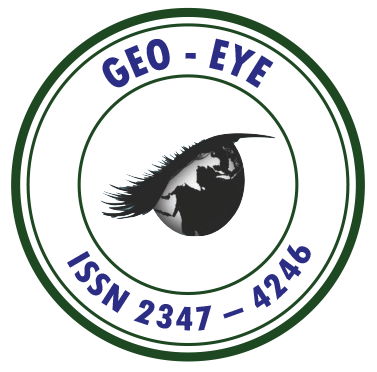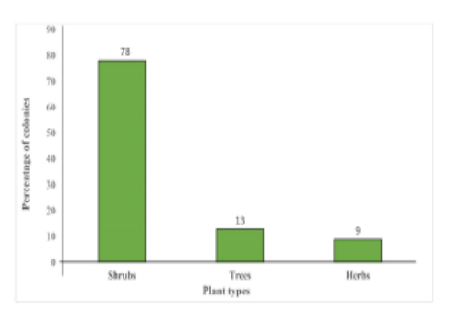
Geo-Eye
Department of Geography & GIS

Department of Geography & GIS

Geo-Eye
Year: 2024, Volume: 13, Issue: 1, Pages: 23-26
Original Article
Solur Krishnamurthy Ramyarani1∗, Narayanappa Nagaraja2
1Department of Zoology, Bangalore University, Jnana Bharathi, Bengaluru, India
2Malaviya Mission Teacher Training Centre, Bangalore University, Jnana Bharathi, Bengaluru, India
*Corresponding Author
Email: [email protected]
Received Date:01 June 2024, Accepted Date:03 July 2024
The dwarf honeybee, Apis florea, exhibits a unique type of nest site selection among honeybee species. These bees build small exposed single combs hanging vertically on the branches or twigs of herbs, shrubs, small trees, piles of dried sticks, etc. Studies were carried out to identify potential nesting plants of A. florea colonies in the plains of South Karnataka. The observations revealed that the honeybee nests were found potentially on shrubs (78%) followed by small trees (13%) and herbs (9%). Furthermore, among shrubs, they were found in large numbers on thorny shrubs viz. lantana (61.37%) and wild jujube (8.69%). Nevertheless, A. florea also selected needle bush and bush plum (5.79% each), Indian cherry (5.34%), cat thorns (4.34%), acacia (4.34%) and lemon (4.34%) for nesting. Studies conclude that thorny shrubs are potential nesting sites of A. florea in the plains of South Karnataka, India.
Keywords
Apis florea, Shrubs, Trees, Nesting plants
© 2024 Ramyarani & Nagaraja. This is an open-access article distributed under the terms of the Creative Commons Attribution License, which permits unrestricted use, distribution, and reproduction in any medium, provided the original author and source are credited.
Subscribe now for latest articles and news.